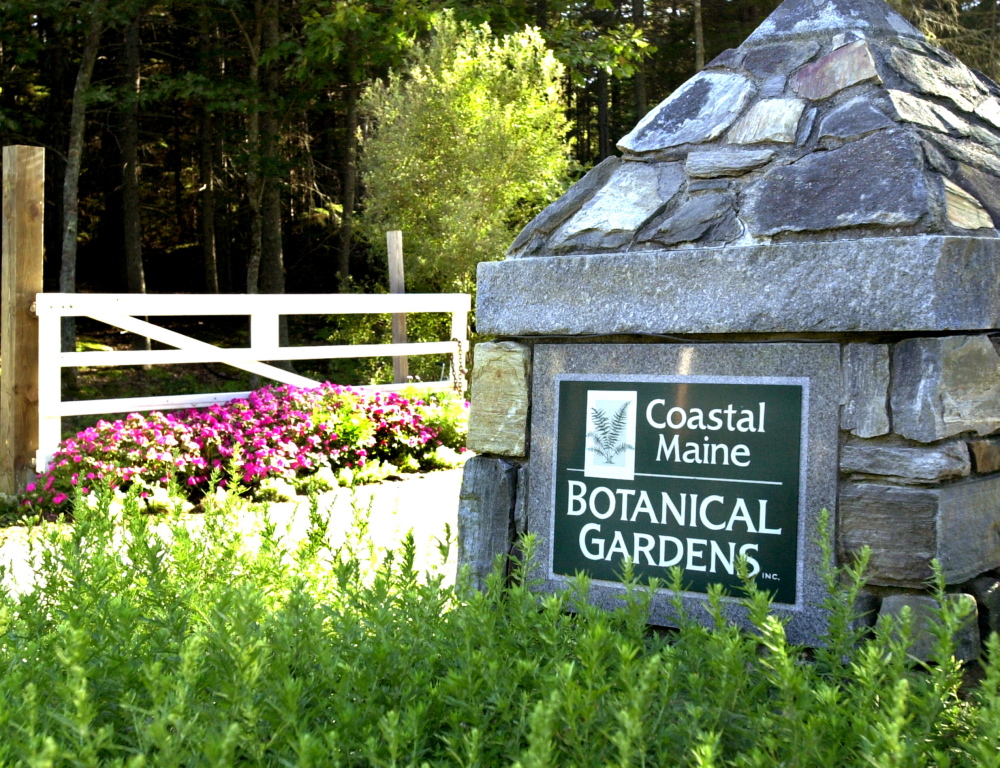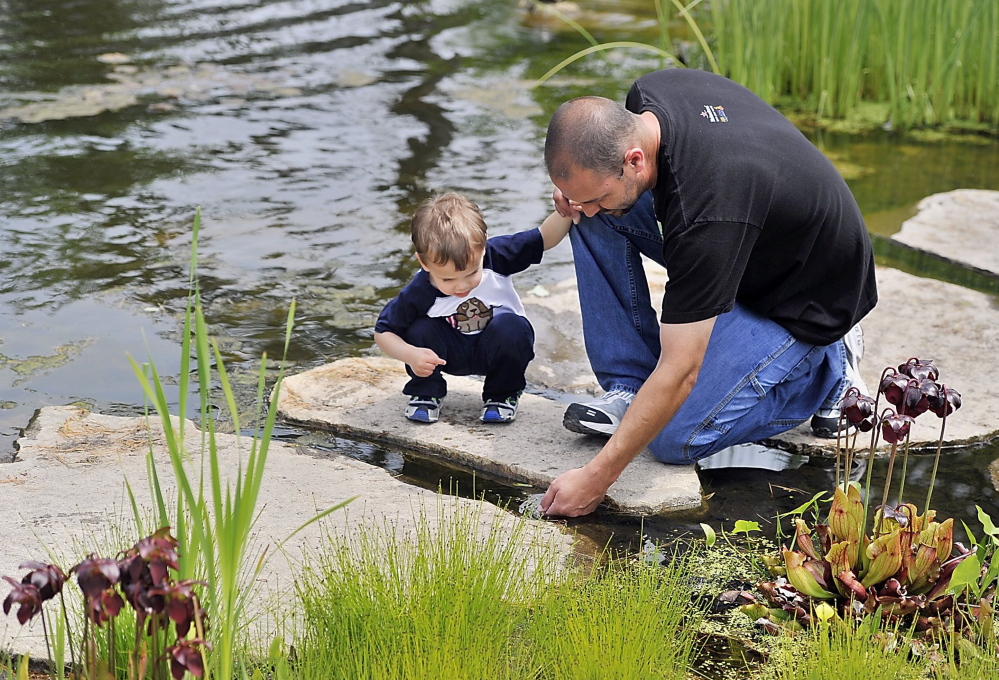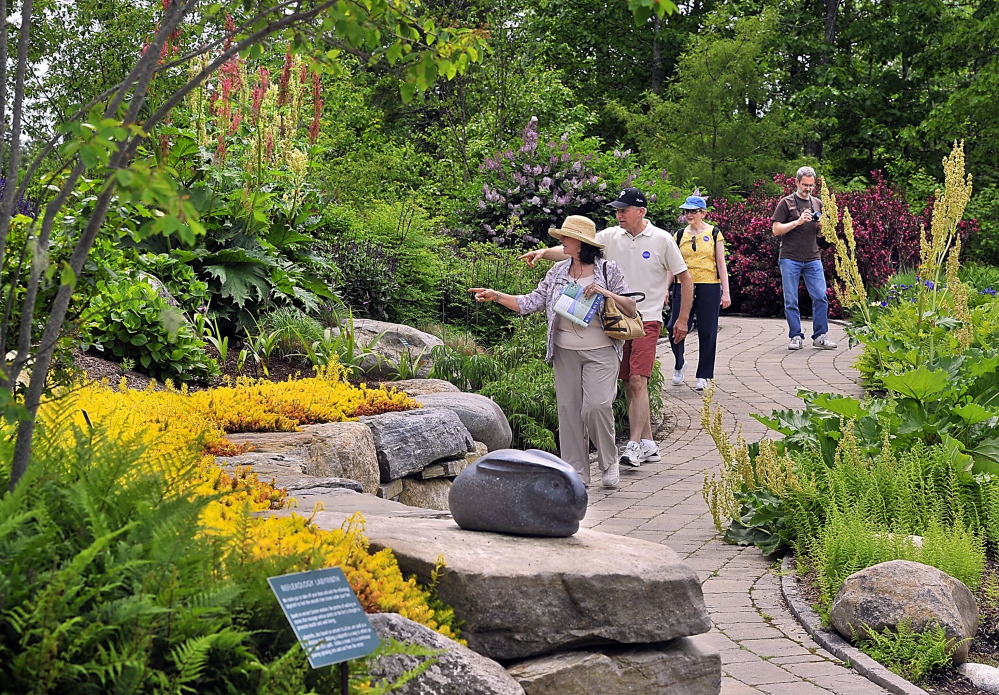Coastal Maine Botanical Gardens in Boothbay has begun planning an expansion expected to see it through the next two decades. Key elements of the plan for the 270-acre property include doubling the size of the intensely planted ornamental gardens from 3 to 6 acres, constructing greenhouses for research and for propagating plants, and building a conservatory and a new visitor center.
The garden needs to expand, executive director William Cullina told members last month, primarily because it has been more successful than its founders ever dreamed. They planned for a maximum of 35,000 to 40,000 visitors a year.
“We blew through that the first year,” Cullina noted, adding that attendance is now 100,000 visitors a year and is expected to hit 150,000 in the next 10 years.
While that unexpected popularity is good, it creates some problems.
“The worst thing that could happen is to have people come and say it is too crowded, that they couldn’t get into the bathroom and had a bad time,” he said.
Many Maine residents have not yet visited the gardens.
My wife Nancy and I have been members since right after the original volunteers bought the property, and have staffed the garden’s Portland Flower Show booth most years since then. Many flower show visitors say they intend to visit the garden but haven’t made it yet. (Others rave about how gorgeous it is or how hard it is to get their child to leave its Children’s Garden.)
The team working on the expansion interviewed 10 leading landscape-architect firms, and last summer picked Nelson Byrd Woltz of Charlottesville, Virginia, to develop the plan.
By this fall, a conceptual master plan, which cost $400,000, is expected to be done. Cullina said he hopes to have ballpark estimates for the price of the expansion itself by October.
He stressed that once the plan is created, the work will be done in stages and paid for as it progresses.
Coastal Maine Botanical Gardens has three prime purposes: horticultural excellence, formal and informal education and applied research. Cullina said it does well in the first two, and the expansion will bring the third to fruition.
It’s not yet been decided in what order the expansion projects will be undertaken, but parking will be done early because current parking is insufficient.
The plan calls for ornamental gardens where the current parking lots are, and new lots outside of those formal gardens.
The greenhouses also would come early, because by propagating their own plants the staff could get better plants for less money, and a lot of those plants will be needed in the expanded gardens.
As Cullina put it, just as a great restaurant needs a top-notch kitchen, a great garden needs a first-class greenhouse.
The staff also could propagate new varieties of plants, trademark and sell them, which would bring in money.
The current visitor center and office building will be converted to a restaurant, and a new visitor center will be built to house ticket sales space, gift shop and other amenities.
The conservatory – a heated area for displaying plants, rather than a working greenhouse – is a major component of the expansion, part of the garden staff’s desire to stretch out its season and an idea that was considered back in the 1990s, when the first volunteers began dreaming of the garden. But such projects can be expensive to build and costly to heat.
“We aren’t talking about creating the rainforest of the Amazon or the dry forest of Madagascar,” Cullina said. “But even in April and May the weather can be not that great, and people are still dying to see something beautiful.”
The conservatory could be used for holiday shows in November and December, orchid shows in the spring and butterfly shows in the summer, he said.
The plans also would unite the northern part of the garden, where the Giles Rhododendron Garden is located and a boat landing has been installed, with the central gardens, where the visitor center is now located.
Cullina stressed that much of the garden’s 270 acres will remain undeveloped, showcasing the native forest with what he called “minor editing.” It could include walking paths, with raised boardwalks over wetlands, going out toward the waterfront.
The plans seem big, Cullina said, but the staff does not want to underestimate as it did when the first plans were still on paper. The new plan will allow for three possible visitor levels by 2035, with 150,000, 250,000 or 350,000 visitors annually.
He noted that Butchart Gardens on Vancouver Island in British Columbia gets 800,000 to 1 million visitors a year, and is even harder to reach than Boothbay.
The expansion, he believes, could make Coastal Maine Botanical Gardens that same kind of destination, a place where people would want to spend several days, and not just in July and August. A place that could mean $25 million to $35 million annually for the local economy.
Not many industries in Maine throw off that amount of annual income while looking amazingly beautiful all year.
Send questions/comments to the editors.





Comments are no longer available on this story